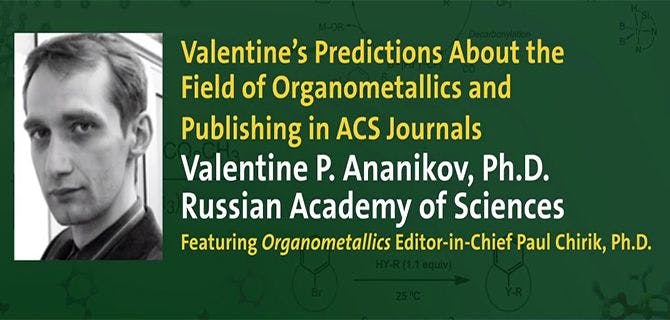More than five years ago, Irina P. Beletskaya and Valentine P. Ananikov published an article in Organometallics entitled, “Can We Predict the Future of Organometallic Chemistry?” The article took a critical eye to the past and present state of the discipline as it stood in 2011. Additionally, the authors made predictions about the future of […]

More than five years ago, Irina P. Beletskaya and Valentine P. Ananikov published an article in Organometallics entitled, “Can We Predict the Future of Organometallic Chemistry?” The article took a critical eye to the past and present state of the discipline as it stood in 2011. Additionally, the authors made predictions about the future of organometallics in particular and organic chemistry in general.
At the time, Beletskaya and Ananikov wrote:
“We believe more and more industrial applications will benefit from implementation of new techniques in catalysis and from the preparation of new transition-metal complexes serving as catalysts. To our knowledge this will also include syntheses of enantiomerically pure compounds. It is not uncommon to expect that transition metal complexes themselves (both reagents and catalysts) will be generated or assembled in situ directly under the reaction conditions. Expensive and rare metals should be replaced by simple and readily available analogues. Understanding the mechanism of catalytic reactions is a rational way to find suitable replacements (Pd, Pt, Rh → Cu, Ni, Co, Fe) and encourage the further development of catalysts (Ru, Re, Au, Ag, Ln). For several important organic reactions (such as reduction and oxidation, formation of new bonds, cyclization, etc.), where a considerable mechanistic knowledge has been gained, rapid elaboration of new, highly efficient catalysts operating under mild conditions may be anticipated without time-consuming trial and error screening. Thanks to the development of a diverse range of fascinating ligands, the behavior of catalytic metal centers can be controlled to promote the desired chemical transformation and suppress the side reactions.” [Emphasis added]
In 2016, Ananikov won the prestigious Organometallics Distinguished Author Award. So now seems like a fine time to ask: how does the state of the field of organometallics compare to the predictions Beletskaya and Ananikov made back in 2011, and in what way(s) was the process of making such predictions an educational process?
In this video, Ananikov sits down with Organometallics Editor-in-Chief Paul Chirik to discuss that 2011 article and the accuracy of its predictions in the light of 2016. The video also touches on how time and technology have changed the article submission process for authors as well as the role publishers can play in promoting innovation. The video is part of a video series of conversations between Chirik and Ananikov, which cover topics as diverse as Ananikov’s career, his advice to other researchers, science culture in Russia, and more.
